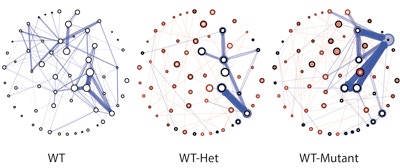
Mouse behavior has traditionally been assessed through careful human observation and scoring of videotaped behavior. Such approaches have yielded tremendous insight into innate and goal-directed behaviors. However, their reliance upon a limited number of pre-specified behaviors — determined by what seems meaningful to human observers — has limited the discovery of novel patterns of action and the prediction of future behaviors. This study from SFARI Investigator Sandeep Robert Datta and his colleagues describes a combined 3D computer vision/machine-learning method that identifies behavioral modules expressed by freely behaving mice. Their findings show that behavior can be broken down into sub-second stereotypical behavioral motifs. Mouse body language develops from organizing these modules in predictable ways. The researchers further demonstrate that, absent human supervision, this model can identify changes in behavioral output resulting from genetic, environmental and neural alterations. This methodology opens up new avenues for the rapid and systematic analysis of mouse behaviors and of behavioral alterations in genetically modified mice. Specifically, Datta and his team plan to capture the behavioral repertoire of genetic mouse models of autism in the next phase of their SFARI-funded study.
Reference(s)
Mapping sub-second structure in mouse behavior.
Wiltschko A.B., Johnson M.J., Iurilli G., Peterson R.E., Katon J.M., Pashkovski S.L., Abraira V.E., Adams R.P., Datta S. R.


